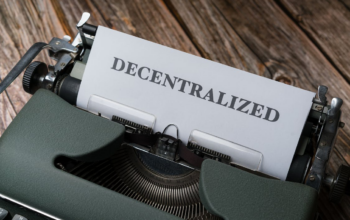What is a no-documentation loans?
A no-doc loan enables potential borrowers to appeal for a mortgage without providing much information regarding income, employment or assets. The loan regulation has evolved, but people prefer these loans in nontraditional situations.
How does it work?
Borrowers with nontraditional finances tend to seek out these loans because the documentation is complex in the standard mortgage application. Self-employment arrangements or alternative lending are a few options in which the income reporting is less for tax. Lenders are likely to look at the candidate’s credit score, capacity to make a greater than usual down payment and typical paperwork such as bank statements. The rate of interest on the loans is typically higher than standard mortgages.
Low- and no-documentation loans are making a comeback.
After the financial catastrophe of 2008 and the adoption of Dodd-Frank, many of the riskiest no documentation lending types collapsed. The ability to repay rule, on the other hand, made way for low-documentation loans like alternative documentation loans. A 2018 measure that repealed parts of the Dodd-Frank law lowered the criteria for prospective qualifying mortgages. This statute did not affect the ability to repay rule, but it made it simpler for borrowers to evade the low-documentation classification. Many smaller banks campaigned for this change, claiming that the Dodd-Frank regulations were unduly burdensome on them. They contended that national lenders had abandoned risky loans that may benefit local areas and that community banks could help real estate markets revive by using more flexible lending practices.
In Australia
Low-doc and no-doc loans were introduced in Australia broadly to allow self-employed people to get personal loans in situations where they would otherwise be unable to do so due to a lack of documents such as payrolls and organisation certificates. They have a high rate of interest as compared to traditional loans. Low-doc loans account for about 5% of bank assets, as per the Reserve Bank, and borrowers who use them are more likely to fail than those who use regular mortgages.
Read Also: Sweat It Out in Comfortable Gym Wear
When would you require a no-doc loan?
If you don’t get regular paychecks but have a lot of money or assets, a no-doc mortgage might be the way to go. However, this product is reserved for a limited few. These loans are not available to the average middle- or upper-middle-class borrower. It’s a deal for a high-net-worth individual with extraordinary circumstances, including an entrepreneur who manages a successful beginning and owns a significant amount of the company’s equity.
Mortgages with no documentation vs other types of loans
A no-doc mortgage works in the same way as other forms of house loans in that it allows you to take the funds you need to purchase a home. The conditions and credit requirements for a no-doc mortgage, on the other hand, are different. To put it another way, no-doc loans necessitate better credit scores and more outstanding down payments. They have fame for charging higher interest rates. Why? Because not having complete concrete proof of income increases the chance of default.
What are the current rates of interest?
The interest rate that an individual will pay will be determined by the type of lender you select, the form of your security property, and your credit history. Put another way, no-doc loans are a “rate for risk” product. Your loan will be more expensive if you pose a more significant risk to the lender. Low-doc loans often have interest rates ranging from 7% to 11% per year, depending on the amount of the property worth you’re borrowing on your credit history. If you need a short-term caveat loan, you may expect to have to pay between 24 and 76 per cent each year. In most cases, this form of caveat borrowing does not assist the borrower, so we will not apply for one unless you have unusual circumstances.



